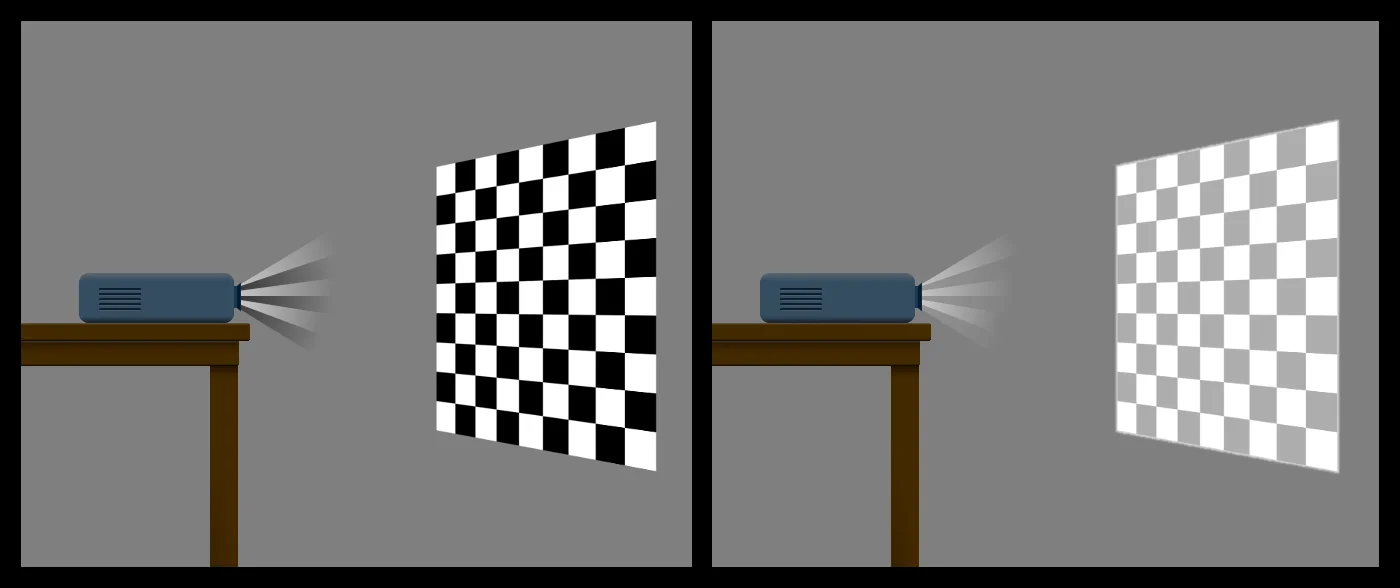How does a projector project images?


A projector is a device that is used to project images onto a screen or surface. It is commonly used in various settings such as classrooms, conference rooms, and home theaters. But have you ever wondered how a projector actually works? In this article, we will explore the fascinating world of image projection and delve into the inner workings of projectors.
Understanding Image Projection
Image projection is the process of displaying visual content on a surface. It involves the use of light and optics to create a magnified image that can be seen by a large audience. Projectors are the primary devices used for image projection, and they come in various types such as multimedia projectors and home theater projectors.
How Projectors Work
Projectors work by combining several key components to create a seamless image projection experience. Let’s take a closer look at each of these components:
1. Light Source
The light source is a crucial element in a projector as it provides the necessary illumination for image projection. Traditional projectors use lamps as their light source, while newer models utilize light-emitting diodes (LEDs) or lasers. These light sources produce intense light that is then manipulated to create the projected image.
2. Optics
Optics play a vital role in a projector’s ability to project images accurately. The light from the source is directed through a series of lenses and mirrors to control its path and focus it onto the screen. These optical components ensure that the image is sharp, clear, and properly aligned.
3. Imaging Technology
The imaging technology used in projectors determines the quality and resolution of the projected image. There are several types of imaging technologies commonly used in projectors, including:
– LCD (Liquid Crystal Display): LCD projectors use liquid crystal panels to control the passage of light and create the image. They are known for their vibrant colors and high image quality.
– DLP (Digital Light Processing): DLP projectors use tiny mirrors to reflect light and create the image. They offer excellent contrast and are often used in home theater setups.
– LCoS (Liquid Crystal on Silicon): LCoS projectors combine the benefits of both LCD and DLP technologies. They provide high-resolution images with excellent color reproduction.
4. Image Processing
Image processing is an essential step in the projection process. It involves converting the input signal, such as a video or image file, into a format that can be displayed on the screen. Projectors have built-in processors that handle this task, ensuring that the projected image is accurate and true to the original content.
5. Projection Lens
The projection lens is responsible for focusing the light onto the screen and determining the size of the projected image. Projectors often have adjustable lenses that allow users to control the image size and focus according to their needs.
Types of Projectors
There are various types of projectors available in the market, each designed for specific purposes. Here are some common types of projectors:
– Multimedia Projectors: These projectors are versatile and can be used for presentations, videos, and images. They are commonly used in classrooms and conference rooms.
– Home Theater Projectors: Home theater projectors are designed to provide a cinematic experience in the comfort of your own home. They offer high-resolution images and are often used with large screens or walls.
– Pico Projectors: Pico projectors are small, portable projectors that can fit in the palm of your hand. They are ideal for on-the-go presentations or entertainment.
Conclusion
Projectors are incredible devices that have revolutionized the way we display visual content. By understanding how projectors work, we can appreciate the intricate technology behind image projection. From the light source to the projection lens, each component plays a crucial role in creating a captivating visual experience. Whether you’re using a projector for business presentations or enjoying a movie night at home, the magic of image projection is made possible by these remarkable devices.
Recent Posts
How do I create an engaging and informative online quiz or assessment?
Creating an engaging and informative online quiz or assessment can be a powerful tool for… Read More
What are the most effective methods for managing and reducing work-related stress in the hospitality industry?
Work-related stress is a common issue in the hospitality industry, where employees often face long… Read More
How can I improve my assertiveness and communication skills in a leadership position?
In a leadership position, assertiveness and effective communication skills are crucial for success. Being able… Read More
What are the key elements of a successful employee recognition and rewards program?
Employee recognition and rewards programs play a crucial role in motivating and engaging employees, as… Read More
How do I effectively manage and respond to customer feedback and reviews?
Customer feedback and online reviews play a crucial role in shaping a company's reputation and… Read More
What are the best strategies for effective time management as a stay-at-home parent?
Effective time management is crucial for stay-at-home parents who juggle multiple responsibilities on a daily… Read More
